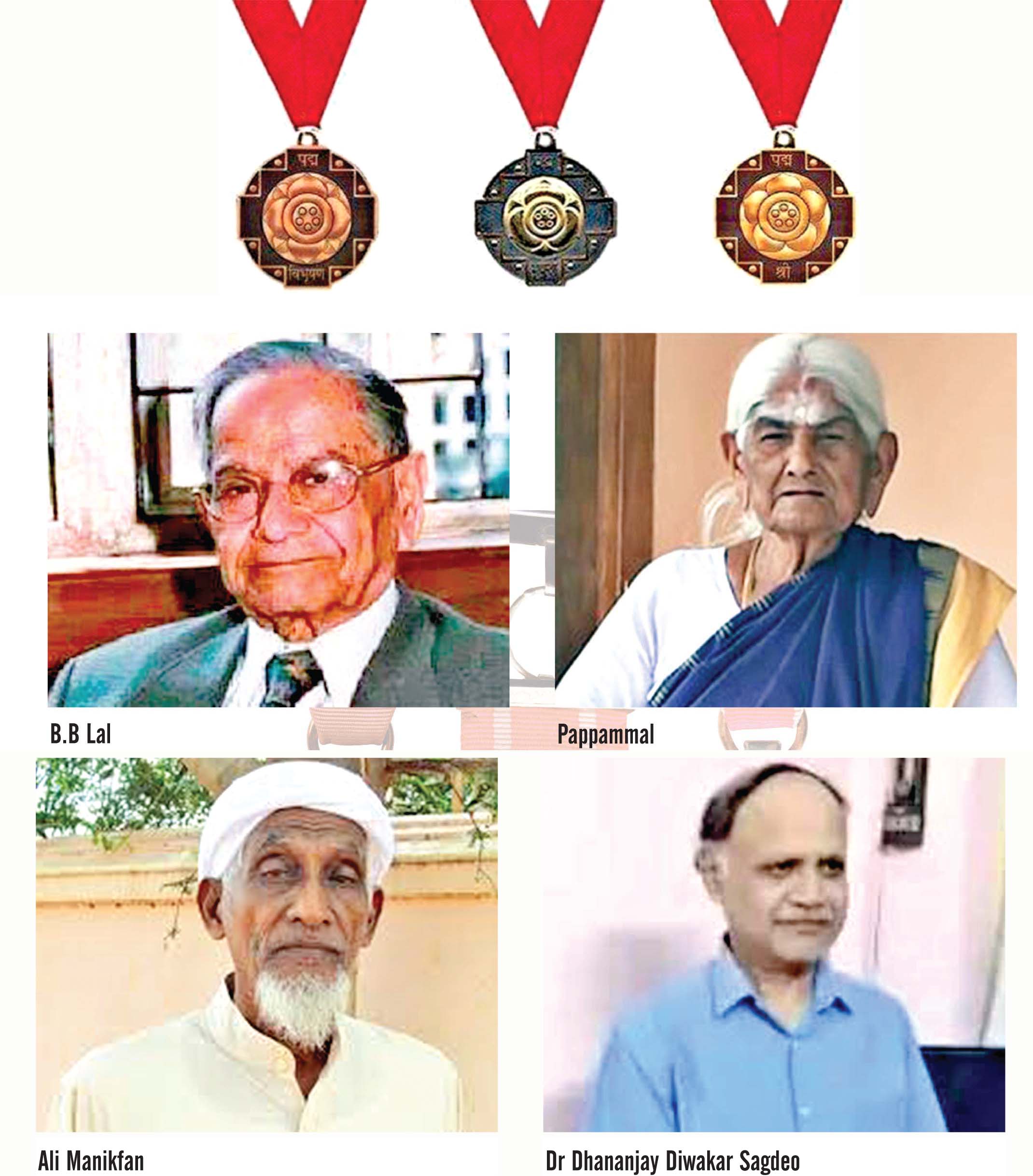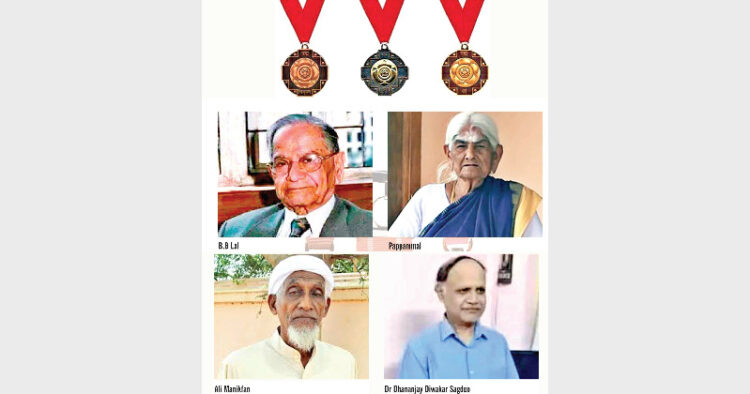The selection of Padma awards was once labelled as mere ‘Political Tokenism’ but after 2018 the process of conferring them has become transparent. The ‘political element’ has completely been displaced from the selection criteria, and it has now become ‘people’s award’

The Union Home Ministry announced the President’s approval of conferring Padma Awards to 119 eminent personalities from diverse fields on the occasion of 72nd Republic Day. The list comprises of 7 Padma Vibhushan, 10 Padma Bhushan and 102 Padma Shri Awards. 29 of the awardees are women, and the list also includes 10 persons from the category of Foreigners/NRI/PIO/OCI, 16 posthumous awardees and 1 transgender awardee.
Once, the selection of Padma awards was labelled as mere ‘Political Tokenism’. The process of conferring them has become transparent, and from 2018, the public can directly nominate people for the Padma awards. The ‘political element’ has completely been displaced from the selection criteria, and it has now become ‘people’s award’. Lesser-known people, who make an impact in society are now being acknowledged.
Out of the seven Padma Vibhushan awardees, two of them are from the art field with renowned musician S P Balasubramaniam who passed away in September 2020 being posthumously awarded from Tamil Nadu, and Odisha’s eminent sculptor Sudarshan Sahoo known for developing Sudarshan Crafts Museum, Puri in 1977 among other works, being awarded India’ second-highest civilian honour. Former Japanse premier Shinzo Abe and archaeologist B.B Lal awarded Padma Vibhushan.
Former Assam Chief Minister Tarun Gogoi and Former Union Minister Ram Vilas Paswan are conferred Padma Bhushan posthumously.
Theatre art exponent Subbu Arumugam from Tamil Nadu, Bhil artist proficient in Pithora paintings Bhuri Bai, from Madhya Pradesh, Villupattu artist Puranamasi Jani from Odisha, transgender folk artist Matha B. Manjamma Jogati from Karnataka, Violinist Rama Swamy Annavarapu from Andhra Pradesh, Sari weavers Biren Kumar Basak from West Bengal and Radhe Devi from Manipur made it to the Padma Shri list.
Puppeteers Parshuram Atmaram Gangavane from Maharashtra, K Kesavasamy from Puducherry, and KK Ramachandra Pulavar from Kerala will also receive the Padma Shri. Famous illustrator of children’s magazine Chandamama KC Sivasankar will be awarded the Padma Shri posthumously.
Bhojpuri folk dancer Ramchandra Manjhi, Assamese singer Gopiram Bargayn Burabhakat, folk singer Dulal Manki from Assam, musicians Reuben Mashangva from Manipur and Satyaram Reang from Tripura, artist Kanaka Raju from Telangana, folklorist Vinayak Vishnu Khedekar from Goa, and mridangam exponent Nidumolu Sumathi from Andhra Pradesh will be honoured with the Padma Shri. From the category of foreigners awarded Padma Shri are British theatre director Peter Brook, and musicologist Sanjida Khatun from Bangladesh and Indonesia artist Wayan Dibia.
B.B Lal was the director-general of the Archaeological Survey of India between 1968 and 1972. He has worked extensively on archaeological sites associated with the Harappan civilisation and the Indian epic Mahabharata. He has also served on several UNESCO committees and was awarded the Padma Bhushan by the President of India in 2000. His archaeological findings confirmed a magnificent temple complex underneath the disputed structure built by Mughal ruler Babar.
Ali Manikfan, 82, hails from Minicoy Island in Lakshadweep. He is an expert on several subjects, without even having any formal education. Manikfan taught himself several languages including Sanskrit, English, Hindi, Malayalam, Arabic, Latin, French, Russian, German, Sinhalese, Persian, Tamil and Urdu. He also expanded his knowledge into Marine biology, Marine research, geography, astronomy, social science, traditional medicine, shipbuilding, education, fisheries, agriculture and horticulture.
Dr Dhananjay Diwakar Sagdeo, a native of Maharashtra made Wayanad (Kerala) his second home some decades ago. He is now decorated with Padma Shri for his selfless service and invaluable contribution to the Tribals in Wayanad. He was the first to identify Sickle cell anaemia among the tribals of Wayanad. Dr Dhananjay came to Wayanad after accepting the call from late RSS Sarsanghchalak Balasaheb Deoras for medical professionals to work among the downtrodden and marginalised communities. He joined the Vivekananda Medical Mission hospital run by Seva Bharati in 1980 after completing his MBBS degree from Indira Gandhi Medical College in Nagpur. Once he came to Wayanad, Dr Dhananjay had to face many challenges while working among the Vanavasis. But his determination didn’t fail. The hospital started as a single-room clinic has now emerged as a beacon of hope for the tribal people of Wayanad.
Pappammal is a 105-year-old agriculturalist from Tamil Nadu’s Coimbatore. She organically cultivates millets, pulses and vegetables across her 2.5-acre field in Thekkampatti, a village on the river Bhavani banks. Pappammal goes to work on her farm every morning without fail. She says young people need time and patience to invest in organic farming. She continues to be active by participating in various agriculture-related events.














Comments